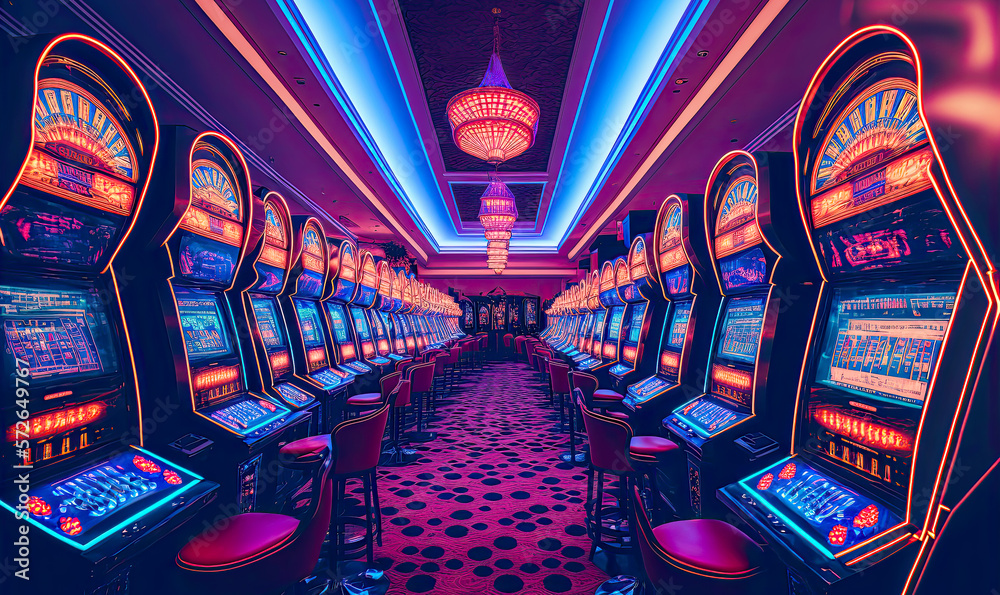
Casino games have long captivated human interest, drawing participants into a realm filled with fortune, strategy, and the allure of thrill. Each game is meticulously crafted not just for fun, but also to inspire targeted emotional responses that keep players engaged and interested. Understanding the motivations behind these designs reveals much about how human psychology plays a key role in the gaming experience.
From the bright lights and vibrant sounds to the complex layering of guidelines and rewards, casino games are designed to create an atmosphere of anticipation and eagerness. Game designers leverage psychological principles to influence player behavior, whether through the use of winning opportunities, close-call situations, or social connections. By examining these elements, we can better appreciate how casino games fulfill not just a desire for entertainment, but more profound psychological needs for thrill and risk.
Grasping Player Behavior
Casino games are crafted with a thorough understanding of gamer psychology, which is vital for attracting and holding players. The thrill of the game, alongside the anticipation of winning, creates a powerful draw. Game designers employ elements like sonic elements, vibrant graphics, and captivating gameplay to engage attention and elicit emotional responses. These sensory experiences enhance the total environment, making players feel more attached in the game.
Another important aspect of player behavior is the notion of risk/reward dynamics. Casino games often manage high-stakes situations with the potential for significant rewards, which can result in the event known as near-miss effect. When players come close to winning, the brain releases dopamine, reinforcing their behavior and encouraging them to keep playing in quest of that fleeting win. This cycle of hope and letdown plays a crucial role in how games are designed and promoted.
Lastly, social factors also play a pivotal role in player behavior at casinos. Many games are made to be played in teams or with other players, fostering a sense of belonging and communal experience. The interaction inherent in games like poker enhances enjoyment and can culminate in prolonged gaming periods. Designers capitalize on this by designing environments that invite players to remain, connect, and revisit, making the overall casino experience more inviting.
The Role of Visuals and Sound
Visuals and sound play a vital role in elevating the player’s experience within gambling games. Designers utilize bright colors, striking graphics, and engaging animations to capture gambler’s attention and hold their focus. The use of themes, such as exploration or luxury, helps create an engaging atmosphere that takes players into another world. By appealing to the senses, these elements contribute to a intensified emotional response, prompting players to engage more profoundly with the games.
Sound design is equally important in reinforcing the experience of casino games. The combination of ambient music, sound effects for successful combinations, and environmental noises creates an auditory landscape that holds players enthralled. Audio cues associated with victories, such as chiming bells or festive music, evoke feelings of thrill and satisfaction, prompting players to continue playing. These audio cues are strategically placed to amplify the thrill of the game and create a more engaging experience.
Additionally, the synchronization of visuals and audio is essential for supporting the game’s overall concept and atmosphere. Each element should coordinate seamlessly to create a cohesive experience that pulls players in. The effective use of this synergy not only improves user satisfaction but also increases the chances of repeat play, as players become more invested in the immersive world that the casino games offer. This thoughtful integration of visuals and sound ultimately enhances player involvement and commitment.
Reward Systems and Engagement
The creation of gambling experiences heavily relies on incentive structures to keep players involved and coming back for more. These systems are based in psychological theories that exploit human nature and desire. Players are often motivated by the excitement of winning, which is reinforced by instant responses through the game’s design. This instant gratification not only enhances the overall experience but also fosters a feeling of success, encouraging players to continue participating in hopes of greater rewards.
Casinos utilize various incentive systems, including jackpots, bonuses, and multipliers, to engage players. These elements create a layer of excitement that sustains interest. Additionally, the unpredictability of results plays a crucial role in sustaining interest. The intermittent reinforcement schedule, where successes are random but happen often enough, keeps participants on edge and driven to keep playing. This loop of hope and anticipation is foundational to the success of casino games.
Furthermore, community aspects, such as competitive events and multiplayer features, boost the engagement factor by tapping into the desire to compete of players. The shared experience of gaming with others can intensify the thrill of winning and create a community atmosphere within the casino. By integrating these community elements with efficient reward systems, casino games don’t just offer fun but also nurture a deeper bond among participants, reinforcing their loyalty to the gaming experience.
Tải app ga179